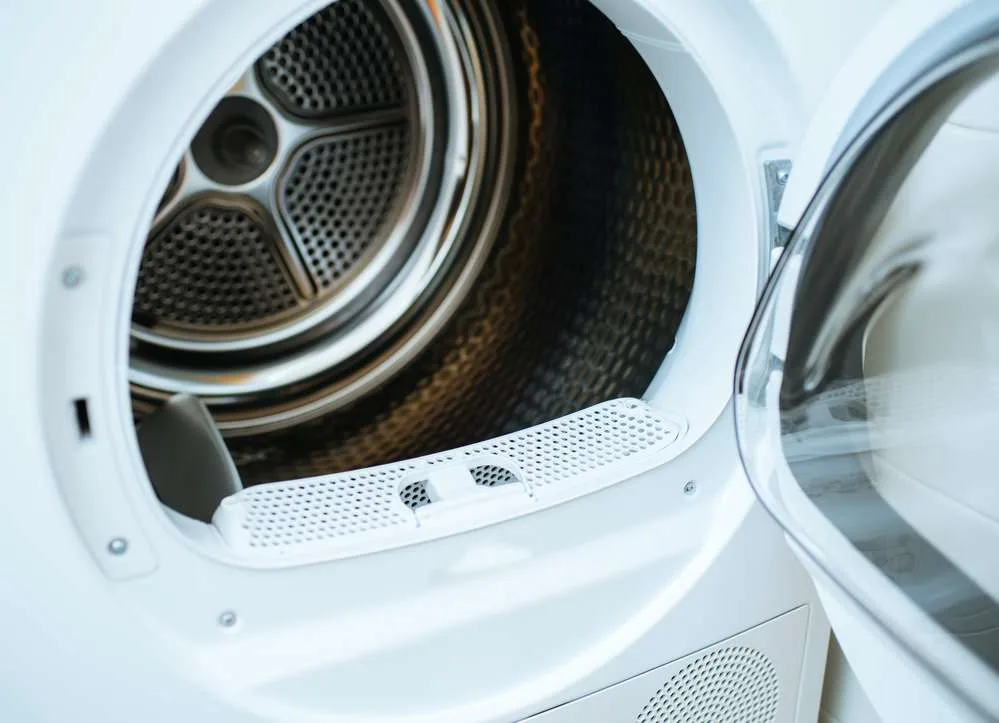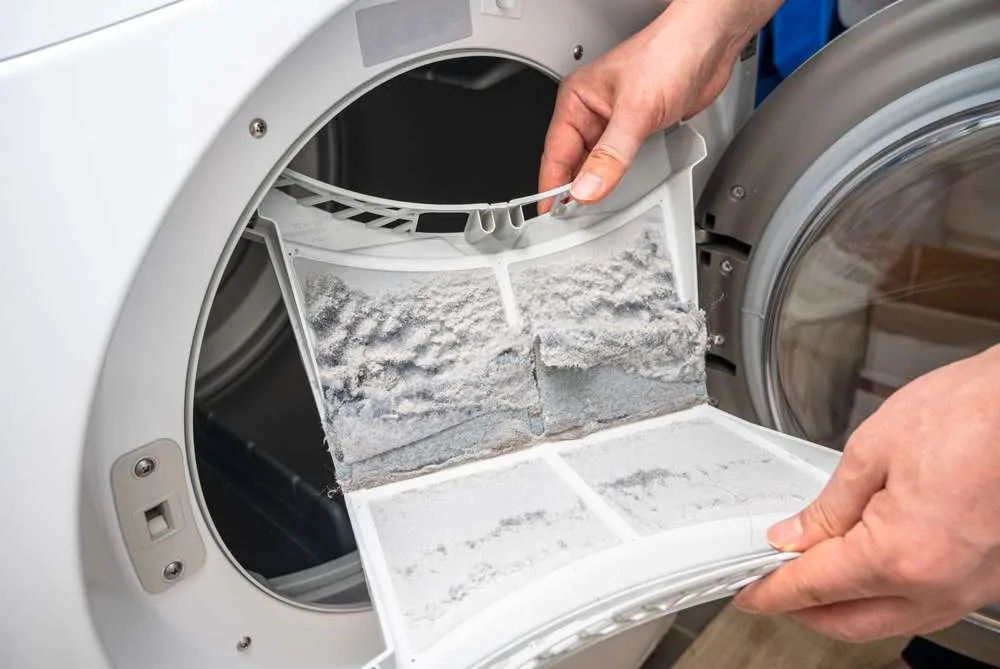
[joli-toc]
Samsung Dryer Not Heating: Do This
DEFECTIVE HEATING ELEMENT
A defective heating element is an issue with Samsung dryers. The heating element generates the heat needed to dry your clothes. If you notice that your dryer is not heating up or your clothes are not drying properly, addressing the heating element issue is crucial.
To begin, visually inspect the circuit breaker or heating element for any signs of damage. If the element appears to be damaged, it will need to be replaced. This applies to electric dryers and gas dryers. Permanently shut off all circuit breakers before any repair.
If there are no visible signs of damage, you can use a multimeter to test the heating element for continuity. Set the multimeter to the ohm setting and touch the probes to the terminals of the heating element. If the meter shows no continuity, the heating element has failed and needs to be replaced.
When replacing the heating element in the dirty dryer, it is essential to ensure that you have the correct replacement part compatible with your Samsung dryer model. Follow the manufacturer’s instructions or consult a professional if needed.
Addressing a defective heating element in a Samsung dryer involves visually inspecting the element for damage or using a multi-meter to test for continuity. If the component fails either test, it will need to be replaced.
BLOWN THERMAL FUSE
A blown thermal fuse is a common issue that can cause a Samsung dryer not to heat up. This safety device is designed to prevent overheating and potential fire hazards by cutting off power to the heating element if it detects excessive heat.
To diagnose and replace a blown thermal fuse, follow these steps:
Access the fuse: Unplug the dryer and locate the thermal fuse on or near the dryer’s blower housing or heating element. Remove any necessary panels or covers to access the fuse.
Conduct a continuity test: Use a multi-meter set to the “ohms” or “continuity” setting. Touch the multi-meter probes to each end of the thermal fuse. If there is no continuity, the fuse is blown.
Replace the fuse: If the thermal fuse is blown, disconnect the wires and remove the old fuse. Replace it with a new fuse of the same rating.
Test the dryer: Reassemble any panels or covers, plug in the dryer, and turn it on. Check if the dryer is now heating correctly.
Always ensure the dryer is unplugged before conducting any repairs or tests.
In summary, a blown thermal fuse in a Samsung dryer is a critical safety mechanism to prevent overheating. Following the steps to diagnose and replace a blown fuse, you can resolve the heating issue and ensure the dryer operates safely.
FAULTY THERMOSTAT
If you have a Samsung dryer that is too hot or not heating correctly, one possible cause could be a faulty thermostat. Troubleshooting and replacing these components is relatively simple and can be done at home with essential tools. Here is a step-by-step guide to helping you resolve the issue.
Safety first: Unplug the dryer from the power source to avoid any electrical accidents.
Access the thermal cut-off switch: Remove the dryer’s back panel to expose the internal components. The thermal cut-off switch is usually on the gas dryer near the heating element.
Disconnect the wires: Carefully disconnect each wire connected to the thermal cut-off switch using pliers. Please take note of their positions to ensure correct re-connection later.
Replace the faulty component: Remove the thermostat from the dryer if you suspect the thermostat is defective. You can check the continuity of the element using a multimeter. If there is no continuity, it needs to be replaced.
Install the new component: Install the new thermostat in the exact location where the old one was removed. Reconnect all the wires to their respective positions.
Test the dryer: Before putting the back panel back on, plug the dryer back in and run a drying cycle to see if the heating issue has been resolved.
Following these steps, you can troubleshoot and replace a faulty thermostat in your Samsung dryer. However, if you are uncomfortable performing these tasks, calling a professional repair technician for assistance is always recommended. CLEAN OUT THE VENTILATION

Clean Out the Ventilation
If your Samsung dryer is not heating correctly, one of the potential causes could be a clogged ventilation system. Cleaning out the ventilation can help improve the airflow and ensure your dryer operates efficiently. Here are the steps to clean out the ventilation in your Samsung dryer:
Start by checking the lint screen. Remove any lint or debris that has accumulated on the screen. A clogged lint screen can obstruct proper airflow.
Locate the vent hose at the back of the dryer vent. Remove the screws or clips holding the panel in place. Once removed, you will have access to the ventilation hose.
Use a ventilation cleaning kit or a vacuum attachment designed explicitly for dryer vents to clear any blockages or build-up inside the ventilation hose. Carefully insert the cleaning tool or vacuum attachment into the hose and remove debris. Be thorough in cleaning throughout the entire length of the hose.
Additionally, it is essential to clean the exhaust vent where the ventilation exits your house. This should be done at least once a year. Remove lint or debris from the hot air vent opening using a brush or vacuum.
After cleaning, ensure warm and consistent airflow from the external vent while the dryer operates. Proper airflow is necessary for efficient drying of wet clothes and laundry.
Regularly cleaning out your Samsung dryer’s lint filter and ventilation can help prevent lint build-up and improve its overall performance. Precise external ventilation is vital to keeping the machine at safe heat levels.
WORN DRYER BELT
If you notice a loud thumping noise coming from your Samsung dryer or the drum is difficult to rotate, it may be a sign of a worn dryer belt. Fortunately, identifying and replacing a worn dryer belt is relatively straightforward.
Start by locating the relevant access panel on your Samsung dryer. Using a screwdriver, unscrew the dryer cabinet panel to gain access to the dryer belt.
Scrutinize the belt for any signs of wear and tear. Look for any visible cracks, fraying, or stretching. If the belt is broken or loose, it needs to be replaced.
You must purchase a new belt compatible with your Samsung dryer model to replace the worn dryer belt. Consult the manufacturer’s manual or contact customer support to determine the correct replacement part.
Once you have the new belt, carefully remove the old belt from the dryer drum and motor pulley. Please take note of the belt’s path in case you need to refer to it during installation.
Next, loop the new belt around the dryer drum, ensuring it is lined up correctly and positioned snugly. Then, route and coil the belt around the motor pulley, applying tension to ensure a secure fit.
Finally, test the newly installed dryer belt by rotating the drum by hand. If it rotates smoothly without obstructions or issues, you have successfully fixed or replaced the worn dryer belt.
Following these steps, you can effectively identify and replace a worn dryer belt in your Samsung dryer, ensuring smooth and efficient operation. Remember to refer to the manufacturer’s instructions or seek assistance from a repair technician if you encounter any difficulties.
DEFECTIVE IDLER PULLEY
If you are experiencing issues with a defective idler pulley in your Samsung dryer, there are a few steps you can take to address and fix the problem.
Start by removing the access panel on the dryer to gain access to the interior components. Inspect the idler pulley closely for any signs of a malfunctioning spring mechanism or a bearing that does not turn freely. These are common indications that the idler pulley is defective and needs replacement.
In some cases, lubricating the idler pulley may help resolve the issue. Apply a small amount of lubricant to the pulley, focusing on the bearing area. Rotate the pulley manually to ensure that it moves smoothly.
If lubrication does not solve the problem, replacing the faulty idler pulley is recommended. Purchase a compatible replacement part for your specific Samsung dryer model. Follow the manufacturer’s instructions or consult a professional repair technician if unsure how to proceed. Replacing the idler pulley should restore proper functioning to your dryer and eliminate any noise or performance issues.
Taking the time to address and fix a defective idler pulley in your Samsung dryer can help ensure its longevity and efficient performance. Regular maintenance and prompt repairs are essential to keep your dryer running smoothly and avoid more significant problems down the line.
FINAL
Some folks get overwhelmed with any repairs; it is best to check your fuse box and shut off power to the unit before any service. Faulty wiring in the main control board or panel can also be an issue with these units. Electrical components in the heater assembly are usually the reason for most failures.
If you are having dryer issues and it becomes too much, please get in touch with us for dryer repair. Call us for any problems like lack of heat or slow drying.
call us at!
(616) 772-1758
We Service Most Of West Michigan
Ada
Allendale
Belmont
Comstock Park
Cedar Springs
Coopersville
Douglas
East Grand Rapids
Grandville
Grand Rapids
Holland
Hudsonville
Jenison
Kent City
Northview
Norton Shores
Ravenna
Rockford
Sparta
Spring Lake
Standale
Walker
West Ottawa
Wyoming
Zeeland